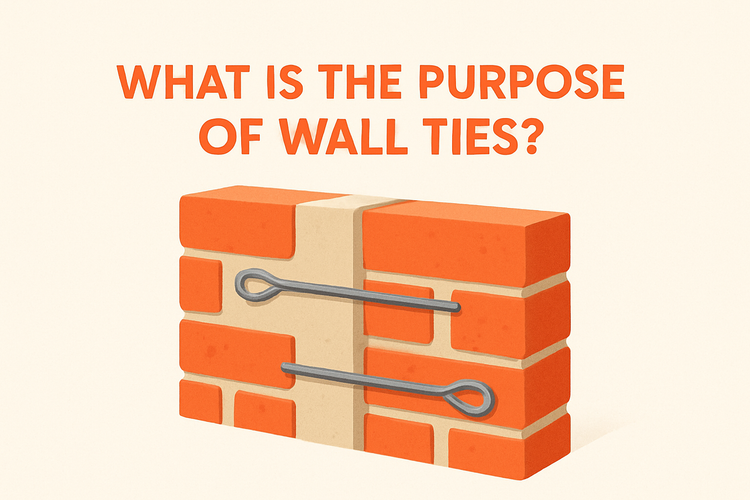What Is The Purpose Of Wall Ties

Understanding the Purpose of Wall Ties
Wall ties are essential components in masonry construction, acting as vital connectors between two parts of a wall. They help maintain structural stability and ensure that different wall layers move together as one unit during expansion or under loads.
Without reliable wall ties, external and internal wall leaves in cavity walls may shift or collapse under pressure. A properly tied structure offers improved integrity and prevents long-term damage that results from moisture, thermal movement, or high winds. Discover more about various types of Masonry Connectors and Wall Ties available for different wall applications.
The Role of Wall Ties in Cavity Wall Construction
In cavity wall construction, wall ties play a crucial role. They physically bridge the cavity and tie the inner and outer leaves of the wall together. Ensuring correct spacing and installation is vital in maintaining performance and safety.
Wall ties transfer lateral loads such as wind pressure from the outer leaf to the stronger inner wall, which is usually load-bearing. Using appropriate ties ensures compatibility with brick type and mortar, affecting overall wall performance. Additionally, for buildings located in exposed areas or subject to high wind conditions, opting for reinforced options such as High Wind Ties can further enhance durability.
The spacing of ties must comply with building regulations to avoid point loads and weak spots. Modern installations often use stainless steel ties due to their rust resistance and longevity in various climates. Correct embedment depth in mortar joints is key for long-term effectiveness and adherence to structural codes.
Importance in Preventing Moisture Transfer and Cracks
Beyond structural support, wall ties assist in reducing moisture transfer between leaves. Keeping the two masonry layers structurally bound but separate helps manage internal environment conditions.
Poorly installed or corroded ties can become a source of internal dampness. When moisture bridges the wall via damaged ties, walls may develop internal condensation issues. Therefore, reliable materials and protective coatings are essential in tie manufacturing.
Tie failure is a common cause of vertical or stepped cracking in external walls. Replacements or retrofitting is often required in older buildings where ties were made from galvanised steel now showing signs of corrosion. Ensuring that the ties are secure and in good condition avoids costly repairs in the future.
Using complements like Restraint Straps can also help provide lateral support in conjunction with wall ties, ultimately creating a rigid and secure structure.
Different Types of Wall Ties and When to Use Them
Wall ties come in several types, including cavity wall ties, movement ties, and frame cramps, each suited for specific applications and load conditions. Choosing the right tie depends on cavity width, wall material, and environmental exposure.
Cavity wall ties are most commonly used in domestic and commercial cavity walls. These are designed to tie the two leaves of the wall without providing a pathway for moisture. Helical wall ties are preferred for retrofit purposes due to their ease of installation and compatibility with older structures.
Movement ties are flexible and ideal for accommodating thermal expansion or contraction in large walls. Meanwhile, frame cramps are used to connect masonry to structural frames, adding to load resistance and shaping overall form stability. For timber frame situations, specific tie configurations alongside Timber Frame Connectors ensure reliable performance.
Long-Term Maintenance and Replacement of Wall Ties
Regular inspection of wall ties is necessary, especially in older buildings with hidden cavity elements. Over time, corrosion can affect steel ties, causing expansion and subsequent cracking in the brickwork.
Survey professionals use tools such as metal detectors and borescopes to identify tie locations and conditions within cavity walls. Remedial wall tie systems may involve isolating old ties and installing new stainless steel ones without removing bricks. This minimally invasive approach ensures both aesthetic preservation and performance restoration.
Replacement becomes essential when signs of wall bulging, cracking, or dampness emerge. Addressing these signs promptly avoids further structural decay. Often, replacement systems include resin-fixed or mechanical wall ties for stronger hold and corrosion resistance in modern repairs. Together with other support systems like Post Bases, these elements play a foundational role in maintaining wall safety long-term.
